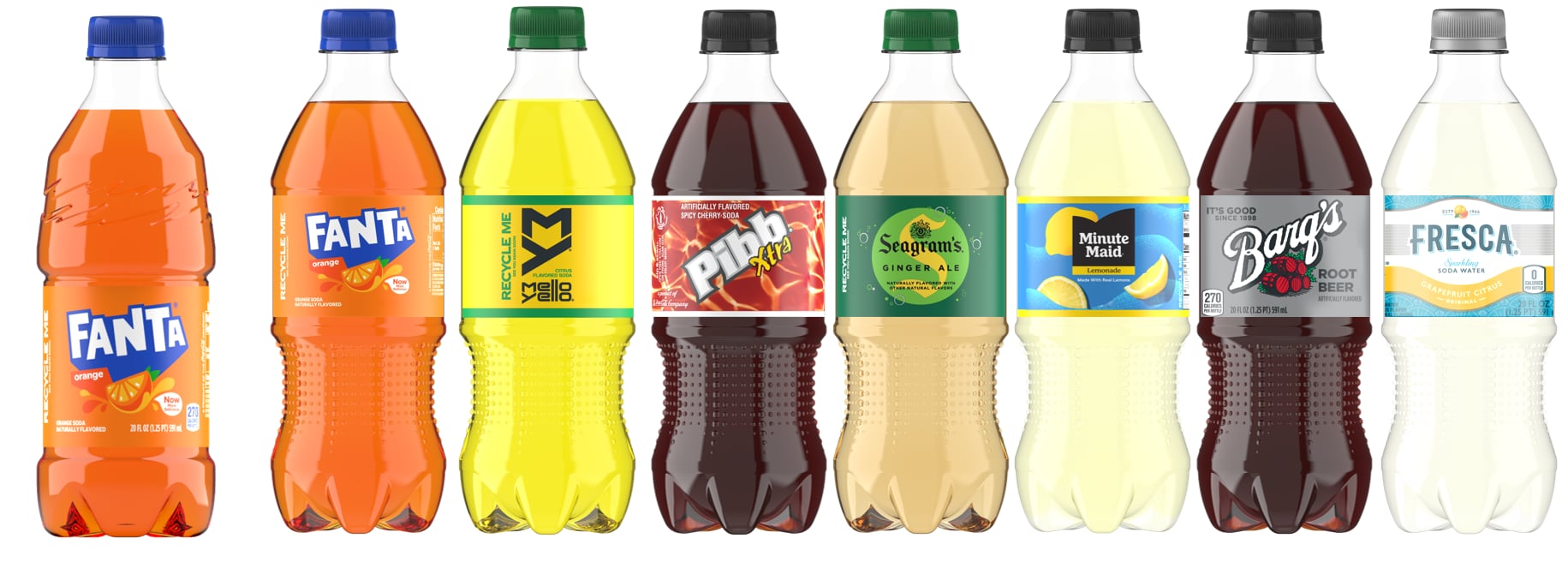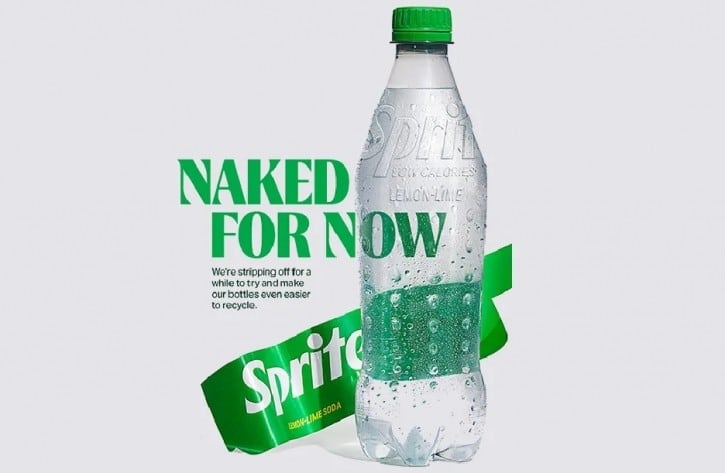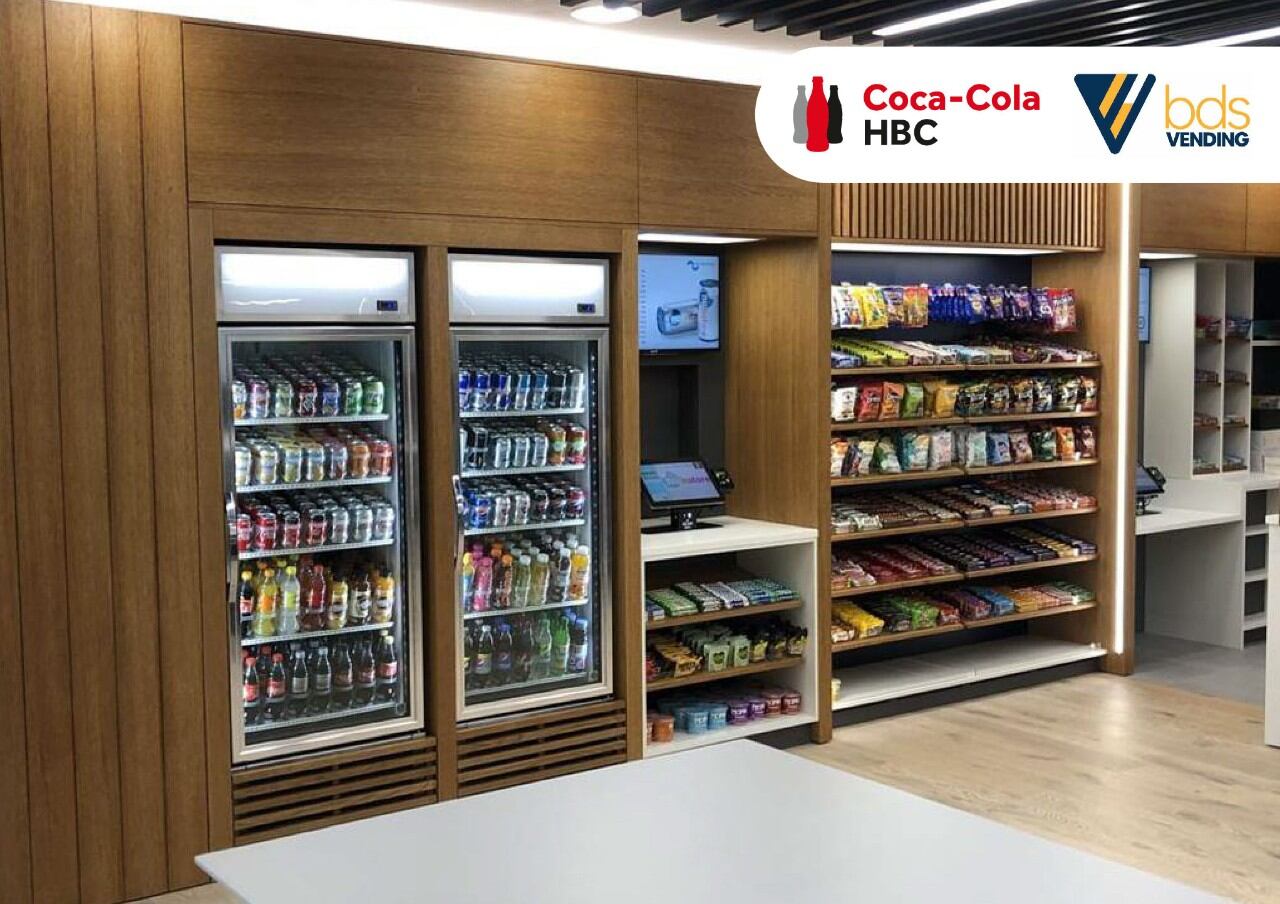Small changes to the shape and design has allowed the company to cut back on plastic and reducing the weight of the bottles from 21g to 18.5g: a reduction of 2.5g per bottle.
The new designs have already been launched and will continue rolling out across the year.
Plastic and carbon reductions
The redesign spans 12oz, 16.9oz and 20oz bottle sizes across sparkling (including Coca-Cola, Sprite and Fanta), Minute Maid refreshments and Minute Maid Aguas Frescas portfolios.
Once the new bottles are rolled out, Coca-Cola believes it can cut back on its use of new plastic – to the equivalent of approximately 800 million bottles in 2025 compared to 2024. This packaging shift is also estimated to reduce carbon emissions to an amount equivalent to taking more than 17,000 cars off the road for one year.
Coca-Cola chose to focus on the small PET portfolio as it represents the highest volume packages - outselling multi-serve formats thanks to their wide availability across a retailers and venues - and thus represents the area ripest for generating the greatest impact on material reduction.
The new bottles have been several years in the making: because the reduction in plastic needs to stand up to the pressure of carbonated drinks and retain the robustness required by distributors and consumers.
PET bottles are made by injecting heated liquid resin into test tube-like “preforms,” which are then inflated into bottle molds with the final intended shape. Lightweighting, therefore, requires focusing on the right preform design.
“This has been a labor of love over the past three years, and we’re lucky to have so many amazing partners who were willing and eager to contribute along the way as they each have their own sustainability goals that help propel us forward collectively,” Alejandro Santamaria, senior director, Global Packaging Development and Innovation at The Coca-Cola Company, told us.
“From a technical standpoint, there were certainly some process changes required to bring the updated bottle designs to life. For example, suppliers’ existing equipment was re-tooled to produce the 18.5g preform design, then bottlers supported this progress by investing in new capital for new molds.
“Ultimately, the secret was finding the right design features that allowed us to lightweight the bottle without compromising the quality of the drink, so each of these bottles went through intensive testing in our research lab. We were able to find the sweet spot of functionality, while also still retaining the appealing shape of the bottle.”
Coca-Cola bottle design change
The more attentive consumers may notice a redesign in the bottles’ shapes for brands such as Coca-Cola and Fanta as a result of the lightweighting.
“We’ve been continuously working to reduce the weight of our bottles, incrementally going from 27 to 21 grams over the last 10 years, but we’d reached the ‘floor’ with our previous designs, so we needed to make some [design] changes while preserving the durability and functionality of our packaging and, most importantly, the quality and taste standards of our beverages,” said Santamaria.
“In terms of labels, there will be no change to any Coca-Cola or Sprite Trademark label size and placement. All other sparkling, Minute Maid Refreshments and Minute Maid Aguas Frescas will require new, smaller labels which will be the same placement as Coca-Cola and Sprite brands. Previously, our other sparkling offerings were packaged in a straight bottle with a very big label. Now, there will be a similar label size across all brands, which is a really positive change in terms of labeling efficiency across our bottles.”

Lightweighting with rPET
The lightweighting also applies to the 100% rPET bottles in the company’s portfolio. Lightweighting with rPET represents a bigger challenge, but the company found these bottles could be changed to cut back on plastic too: “We actually started testing with the 100% rPET bottle because we knew if we got that right, we’d get virgin PET right too,” said Santamaria.
Testing is underway to potentially apply the new lightweighted designs to multi-serve 2-liter and 24-oz. PET bottles. Additionally, a significant portion of the Coca‑Cola North America still beverages portfolio, including sports drinks, enhanced waters and teas will transition from hot fill to aseptic processing, which uses less plastic and energy by filling beverages into pre-sterilized containers.
The new bottles are rolling out in the US and Canada. Globally, TCCC has some 150 lightweighting initiatives and recycled and renewable material projects – with each market sharing learnings from each other.




